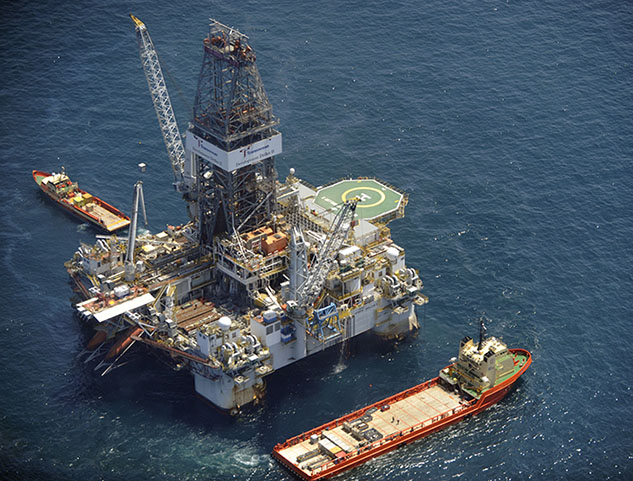Deepwater driller Transocean Ltd. announced Tuesday that it was acquiring competitor Ocean Rig UDW Inc. in a $2.7 billion cash and stock transaction.
The deal bolster’s Transocean’s industry-leading position in deepwater drilling and extends and strengthens its geographical spread. The Ocean Rig purchase adds nine high-specification ultradeepwater drillships, two harsh environment semisubmersibles, plus two high-specification drillships under construction (with delivery in 2019 and 2020) to Transocean’s fleet. The combined fleet will number 57 floating drilling rigs.
Transocean also said it will retire the midwater semisubmersible Songa Delta and the ultradeepwater drillship C.R. Luigs. The two announcements signify that the offshore drilling industry recovery is underway and likely gaining strength. Why? These are moves associated with a recovering industry, not one that’s stagnant or declining. Higher oil prices are generating increased operator cash flow. More money and lower drilling and development costs combine to make offshore projects more competitive. Importantly, offshore still provides operators with potentially large reserves and output, critical for the health of global integrated oil companies.
An important element in any industry recovery is the elimination of a competitor, as well as upgrading the quality of the rig fleet. These steps not only tighten the rig market, but also signal to producers that quality drilling equipment is moving into the hands of stronger competitors who will demand better contracts and day rates. What Transocean is doing is consistent with the early phase of an industry recovery.
Ocean Rig becomes the latest company added to Transocean’s colorful history. Over its 65-year life, Transocean has collected a stable of notable offshore drilling companies, while also setting numerous drilling records. Sending out the first mobile drilling rig (Rig 51) in 1954, Transocean also built the first 10,000' water depth drillship with dual drilling capability. Unfortunately, its history was tarnished by the Deepwater Horizon disaster.
For those with offshore blood in their veins, Transocean’s acquisition history reflects the offshore industry’s cycles. From Sonat Offshore Drilling, the company evolved through acquisitions and mergers, including combinations with a number of other offshore drilling combinations including: Transocean ASA, Sedco Forex, (Sedco and Forex Neptune Drilling), R&B Falcon (Reading & Bates, Falcon Drilling and Cliffs Drilling), Global Santa Fe Corp. (Global Marine Inc. and Santa Fe International Corp.), Aker Drilling and Songa Offshore.
Even the latest rig retirement announcement reflected on the industry’s history. The rig was named for Russ Luigs, chairman and CEO of Global Marine during the 1970s offshore drilling boom, which turned into a bust in 1985 when oil prices fell below $10 a barrel. Houston, the capital of the offshore drilling industry quickly became the bankruptcy capital of the U.S. with Global Marine being the largest bankruptcy in U.S. history at that time. The offshore industry recovered, just Transocean’s acquisition is showing now.





